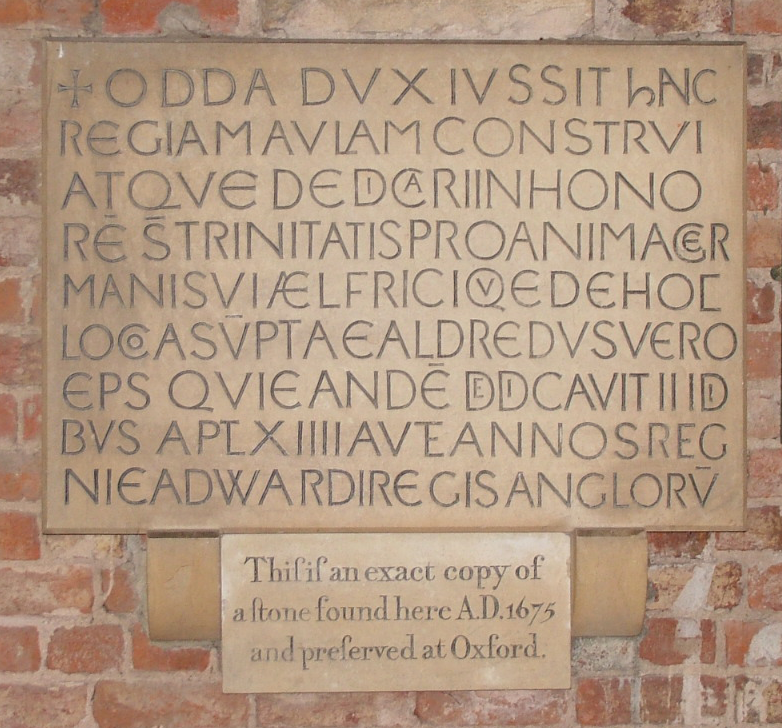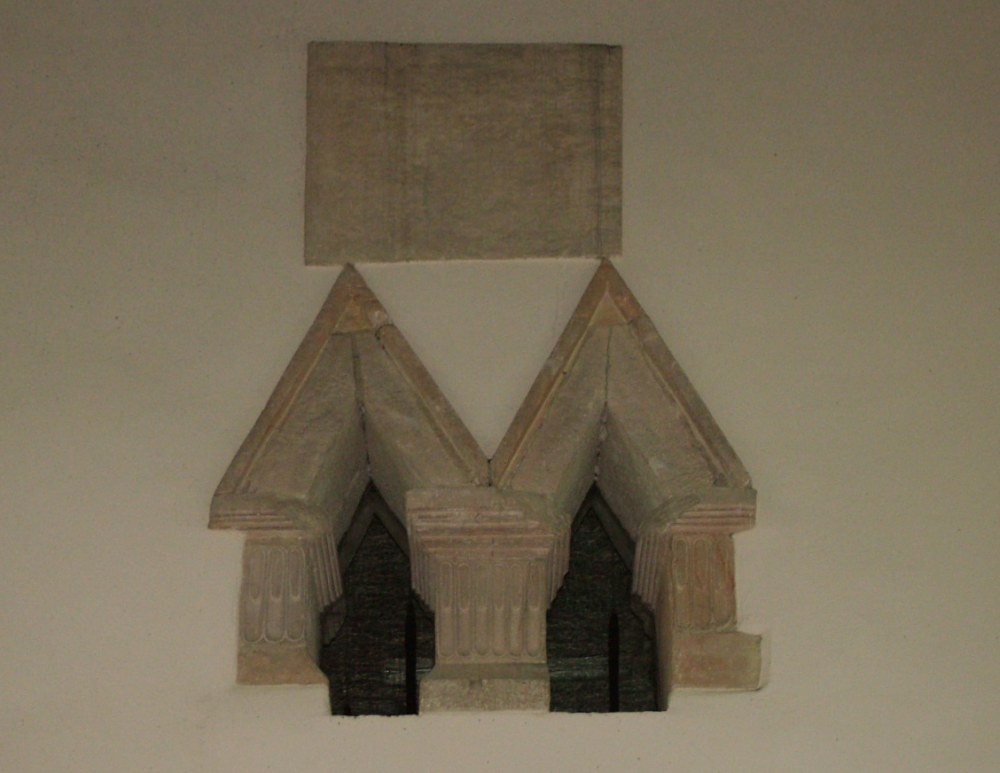The date of the foundation of Deerhurst as an Anglo-Saxon minster church is unknown. The church was already in existence in 804 when Æthelric, son of Æthelmund, bequeathed extensive lands to the community at Deerhurst. Both Æthelric and Æthelmund were probably buried here. Æthelmund was in all likelihood the ealdorman of the Hwicce killed in battle with the men of Wiltshire in 802. In the first half of the 9th century Deerhurst seems to have been one of the most important religious foundations of the kingdom of the Hwicce, a sub-kingdom of Mercia.
In the second half of the 10th century, St Alphege began his ecclesiastical career at Deerhurst. Alphege went on to become Archbishop of Canterbury but was martyred by the Danes at Greenwich in 1012. Deerhurst played an important role in 1016 when King Cnut of Den mark and King Edmund Ironside met at Deerhurst, made peace and divided England between them. In the middle of the 11th century Deerhurst was the principal residence of Earl Odda, one of the most important men in England during the reign of Edward the Confessor. Odda died in 1056 soon after the dedication of a second church building now known as Odda’s chapel.
mark and King Edmund Ironside met at Deerhurst, made peace and divided England between them. In the middle of the 11th century Deerhurst was the principal residence of Earl Odda, one of the most important men in England during the reign of Edward the Confessor. Odda died in 1056 soon after the dedication of a second church building now known as Odda’s chapel.
After Odda’s death the parish church and its estates were given to the monastery of St-Denis near Paris. Deerhurst became an alien priory, a cell of St-Denis, while Odda’s own lands were given to Westminster Abbey. Subsequently, after the Norman Conquest, the division of Deerhurst between two distant landlords meant that it lost the importance it had hitherto enjoyed.
The priory at Deerhurst had a chequered history. During the Hundred Years War St-Denis lost control and Deerhurst eventually became a cell of Tewkesbury Abbey. After the Dissolution of the Monasteries the priory church became a parish church, as it remains to this day. There was a major restoration of the building in 1861-2 when many of the Anglo-Saxon features now visible were discovered.
The Parish Church of St Mary
St Mary’s church is one of the finest and most complete buildings in England to survive from before the Norman Conquest. Its architectural history is complex and is still much debated by architectural historians, but a substantial part of the building is now considered to belong to the first half of the 9th century, the period of Æthelric’s bequest.
 There is some magnificent Anglo-Saxon sculpture, much of it of the 9th century. This includes the famous angel in the ruined apse and a series of carved beast-heads, including two at the west end and two on the chancel arch. The font also belongs to the 9th century and a statue of the Virgin and Child (originally painted) near the entrance is likely to be of a similar date.
There is some magnificent Anglo-Saxon sculpture, much of it of the 9th century. This includes the famous angel in the ruined apse and a series of carved beast-heads, including two at the west end and two on the chancel arch. The font also belongs to the 9th century and a statue of the Virgin and Child (originally painted) near the entrance is likely to be of a similar date.
 There are many surviving Anglo-Saxon arches, doorways and windows. A particularly notable feature is the high-level chapel in the tower. This is not open to visitors but it has a splendid double-opening with triangular heads which can be seen from the floor of the nave.
There are many surviving Anglo-Saxon arches, doorways and windows. A particularly notable feature is the high-level chapel in the tower. This is not open to visitors but it has a splendid double-opening with triangular heads which can be seen from the floor of the nave.
In the early 13th century the Anglo-Saxon nave walls were cut through by Early English arcades with attractive carved capitals. There is a collection of medieval glass at the west end of the south aisle, including a fine 14th-century figure of St Catherine and a 15th-century figure of St Alphege. The Cassey family brass of 1400 shows the family and includes a dog called Terri, one of the earliest known representations of a named pet.
A further interesting survival is the early 17th-century arrangement of the chancel in Puritan fashion, with seats to the north, east and south of the altar. A stained glass window in the north aisle commemorates the notable geologist, Hugh Strickland; a coat of arms shows the turkey, an earlier member of the family being credited with bringing the first turkey from America.
Major New discovery!
A painted figure of Anglo-Saxon date has recently been discovered on a stone panel high up in the east wall of the nave. The panel portrays a saint carrying a book in a veiled hand and is perhaps of 10th-century date. It is in all likelihood the oldest known wall-painting in any church in Britain (the only other painting of comparable age is at Nether Wallop in Hampshire). A publication is now available. Visitors should be aware that virtually nothing can be seen from ground level.
Odda’s Chapel
Deerhurst’s second Anglo-Saxon church is a single two-cell building of nave and chancel. It was built by Earl Odda in memory of his brother Ælfric. It is dated 1056 by an inscription which is now in the Ashmolean Museum in Oxford. Odda’s Chapel is maintained by English Heritage, so The Friends have no involvement with it.
